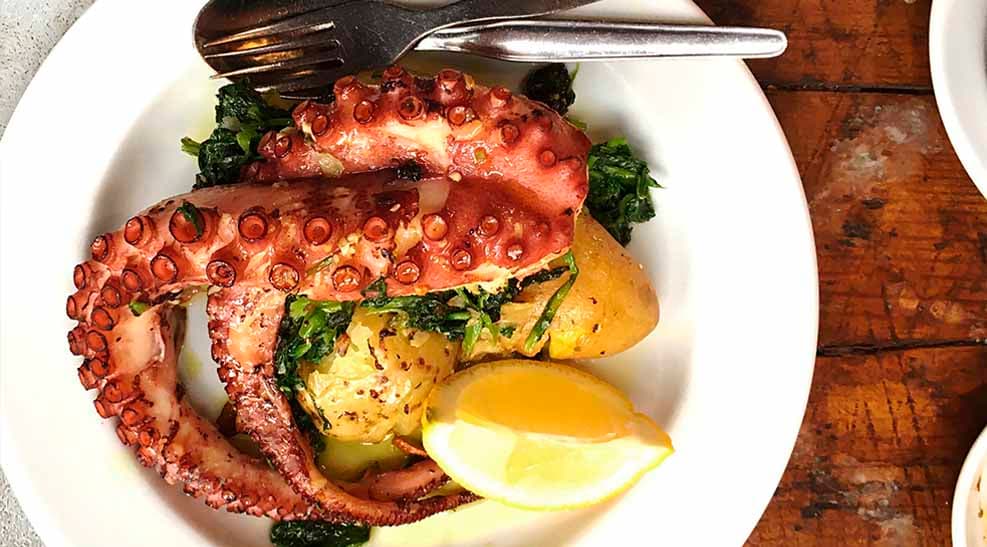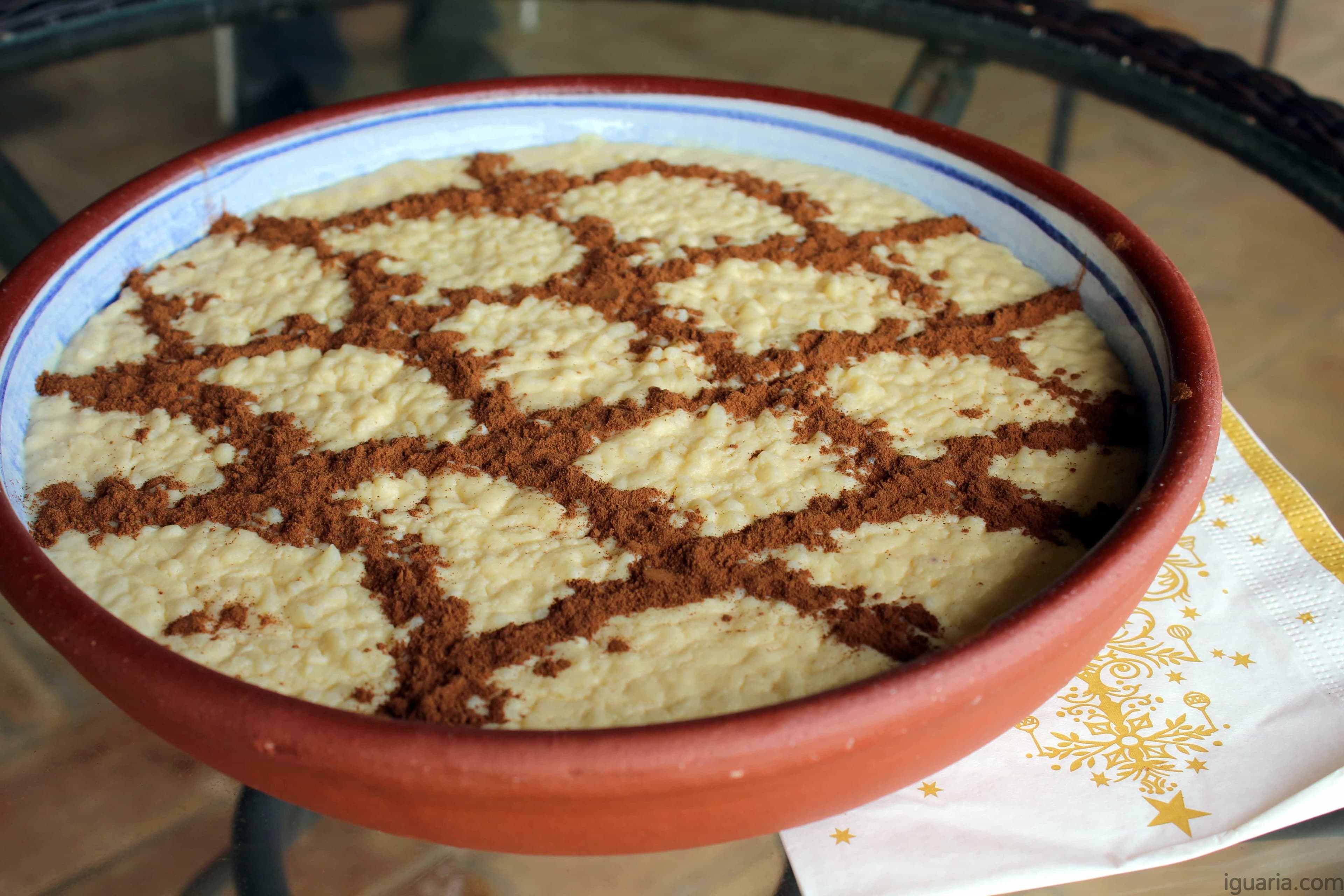
If you’re looking for a meal that brings everyone together from the kids dragging their feet to the table to the grandparents checking their watches, look no further : Feijoada à Portuguesa is the secret weapon ! This hearty stew of beans cooked with a mix of meats, smoked sausages, and a touch of greens is the very definition of generous Portuguese cooking, “put everything on the table and help yourself.”
A bit of history to set the mood
Feijoada has its roots in northern Portugal, mainly in the Minho, Douro, and Trás-os-Montes regions. The idea was simple : a guisado (stew) made with beans (white or red, depending on the area) and pork cuts (ears, tail, feet, ribs) often smoked or salted Over time, it became a Sunday family classic, a true moment of togetherness : you cook slowly, eat late, and share everything.
And just a friendly reminder : while the Brazilian version (black beans + lots of meat) is more famous worldwide, remember, the original one was born right here in Portugal !
The recipe
Ingredients for 6-8 people :
- 500 g dried beans (red or white, your choice)
- 300 g pork shoulder or ribs, cut into large pieces
- 200 g chouriço or smoked linguiça
- 200 g morcela (Portuguese blood sausage) or another local sausage
- 1 pig’s foot or a small piece of pork tail (optional, but super authentic)
- 1 large onion, chopped
- 4-5 garlic cloves, crushed
- 1 bay leaf
- 1-2 carrots, sliced
- 200 g Portuguese cabbage or savoy cabbage, cleaned and finely shredded
- Olive oil, salt, pepper, paprika (or colorau)
- Cooked white rice or rustic bread to serve
Preparation :
- Soak the beans in cold water for at least 8 hours or overnight.
- Drain and place them in a large pot with the pork shoulder, pig’s foot (if using), bay leaf, and enough water to cover everything. Bring to a boil, skim if necessary, then reduce the heat.
- Meanwhile, in a frying pan, sauté the onion and garlic in olive oil until soft. Add the smoked sausages, let them brown slightly, then pour everything into the main pot.
- Add the carrots. Let it simmer gently for about 1½ to 2 hours, until the beans and meat are tender. Add the cabbage during the last 15-20 minutes of cooking.
- Adjust seasoning with salt, pepper, and paprika to taste. Remove the bay leaf.
- Serve hot with white rice or good rustic bread and maybe a drizzle of olive oil on top.

Grandma’s tips & chef’s secrets
- Pick quality beans : a clean, whole bean makes all the difference in texture.
- That little piece of tail or pig’s foot ? Optional… but if you use it, you’ll get extra richness, collagen, and that signature “deep pot” flavor.
- Don’t add the cabbage too early, it’ll lose color and texture. Add it near the end for a fresher touch.
- Love smoky flavor ? Use a well-smoked linguiça or chouriço, it lifts the whole dish without needing too much seasoning.
- Make plenty ! Feijoada tastes even better the next day. Just reheat it slowly and enjoy round two.
- For the perfect pairing : a simple Portuguese red wine (from Alentejo or Douro) or just good bread for soaking up the sauce.
So here it is : Sunday’s on the horizon, you’re looking for a dish that makes the most of leftovers, brings the family together, and makes you say, “Just one more spoonful, please.”
Portuguese Feijoada is ready to win you over, right at the table !
Share this article
Suggested articles

Pão de Ló
In every Portuguese family, there’s a cake that comes out of the oven like a little sun: the pão de ló. Golden, airy, soft, it always announces something joyful. It’s the cake of dressed-up Sundays, overfilled tables, and aunts who hug you too tightly while saying how much you’ve grown.
.jpg&w=3840&q=75)
Pastéis de Bacalhau
There are dishes that smell like holidays and grandma’s kitchen. Pastéis de bacalhau are exactly that. These little golden cod croquettes, crispy on the outside and soft on the inside, are at once an appetiser, a madeleine of Proust, and proof that Portugal has completely mastered the art of frying.

How to make a fish cataplana at home ?
I don’t know about you, but for me, just hearing the word cataplana already brings to mind the sound of the lid lifting, the steam escaping, and that blend of garlic, white wine and sea air filling the kitchen. A Portuguese dish full of sunshine, humour and conviviality, but also (let’s admit it) a little technical challenge when you want to reproduce it at home ! (unless, of course, you’ve had a bit of practice !)

The secret of arroz de pato (duck rice)
Ah, arroz de pato… Just thinking about it makes me hungry ! This dish is the very definition of Portuguese comfort food, the kind that fills the house with rich aromas, warms the heart, and makes you forget bad weather (and sometimes even family arguments, yes really !).

Polvo à Lagareiro : the roasted octopus in olive oil that melts Portugal (and you too)
If there’s one dish that perfectly sums up the generosity and simplicity of Portuguese cuisine, it’s Polvo à Lagareiro ! This roasted octopus drenched in olive oil, served with crispy potatoes and perfumed with garlic, is like a bit of Portuguese sunshine on a plate. It’s that dish everyone loves : the one you order “just to taste”… and then refuse to share.

Arroz Doce : the cinnamon-kissed rice pudding that warms Portugal
This dessert may look simple and it is… but it’s exactly that simplicity that makes it so special. Arroz Doce, literally “sweet rice,” is a true institution of Portuguese cuisine : rice gently cooked in milk, infused with lemon zest and cinnamon, served during big celebrations or on a quiet winter Sunday when you just need a bit of comfort.


